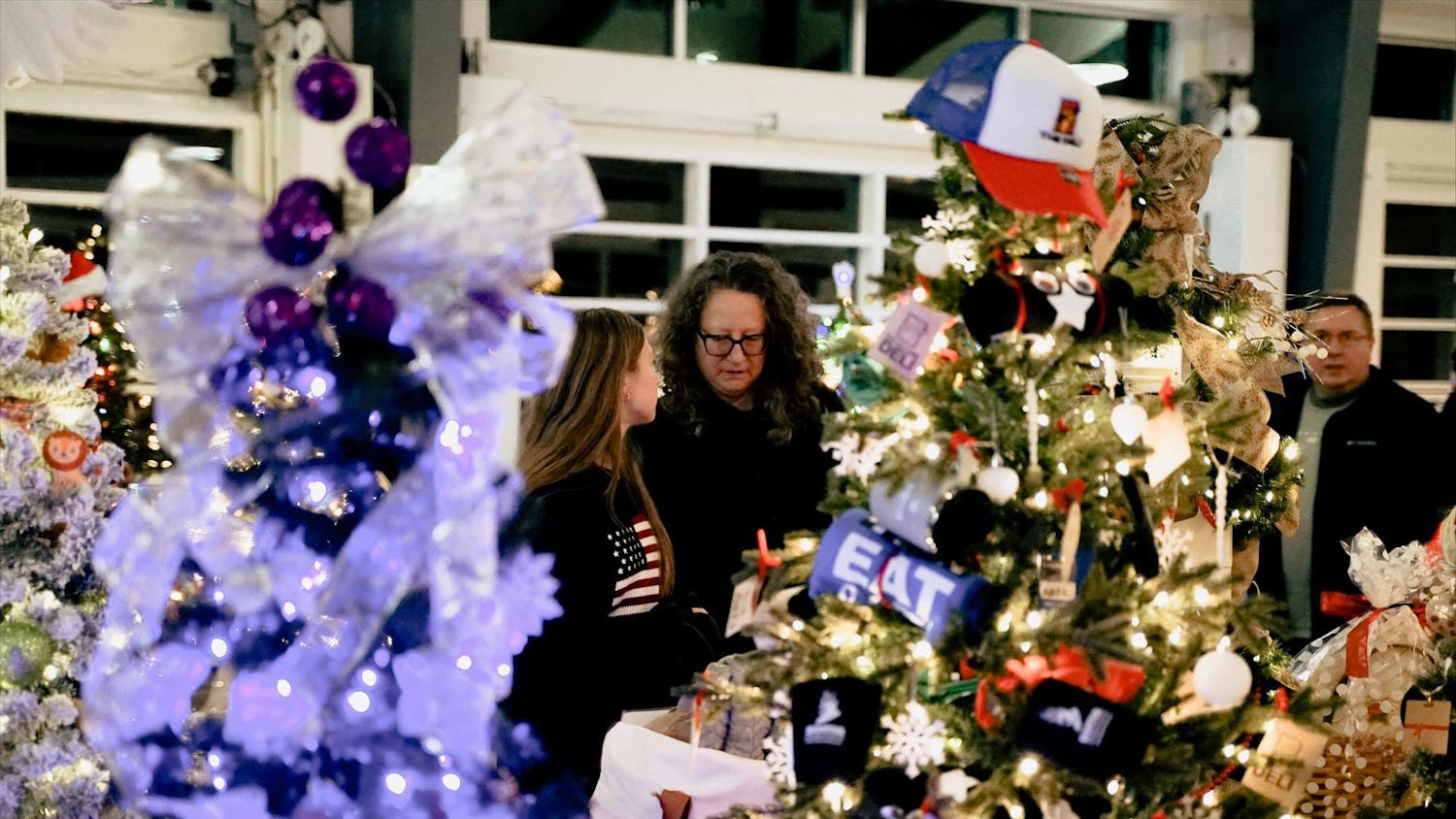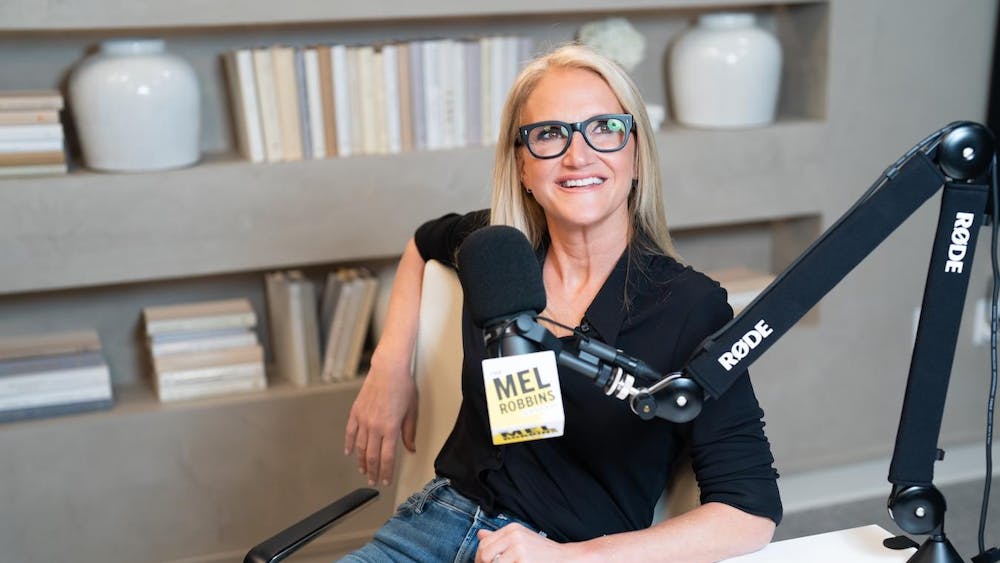Today’s lesson: sight words.
Read a phrase. Strike a pose. Draw it. Write it.
Paula Bell, a Fairview Elementary School Title I aide, has her first-graders participate in quick draw. Quick draw is an activity adopted from Leonard Bernstein’s Artful Learning Model, a school improvement program that uses the arts to enrich curriculums while maintaining a focus on state standards and essential learning skills.
The quick draw activity helps students comprehend the meaning of sight words, phrases and sentences — a component of Indiana state
standards.
The first sentence is “This is a good day,” and one student poses in the front of the classroom with a big smiling face and hands extended into the air. The first-graders begin drawing once the music starts and can’t stop until it ceases. Essentially the children are scribbling with a purpose — students have to draw in a circular motion without their marker ever leaving the page and create a figure that resembles the pose one of their peers is making.
Bell takes a special notice to Kelyn, a student who usually refuses to participate in any sort of academic activity. But Kelyn does this one without any problems. He draws the models’ poses and writes the sentences onto his piece of paper.
Instead of Bell telling Kelyn to participate, she is able to compliment him.
“Good job, Kelyn,” she says. “I see hands and legs. I like how you took almost the whole page.”
***
The Artful Learning Program was implemented at Fairview because it encompasses all types of learners: visual, auditory and kinesthetic.
“It allows learners who are not as gifted academically to find success in other ways,” says Mary Carol Reardon, a Title I teacher and member of Fairview’s Artful Learning strategy team.
At Fairview, learning is meant to be fun and creative. The arts are used as tools to help students better understand what they are being taught.
Fairview is a school where most of the students come from low-income families; 90 percent of the student population is on free or reduced lunches, according to the Indiana Department of Education. Fairview did not make Adequate Yearly Progress (a measure of a school’s academic success through standardized tests under the No Child Left Behind Act) for the last several academic years, which is why the school had to restructure its teaching approach.
“Well, we obviously want to raise our students’ academic achievement assessments,” says Fairview’s principal Karen Adams. “But that won’t necessarily happen in the first year. However, we are hopeful we will, due to the deeper thinking we’ve seen.”
After considering many other school improvement programs, Fairview’s administrators and faculty chose to become an Artful Learning Community.
“This is what kids connected to most,” says Kathy Heise, Fairview’s music teacher and head of the school’s Artful Learning strategy team. “And we always get a better response from parents when things are performance based. Artful Learning seemed like a natural choice.”
The Artful Learning Model is a four-phase learning sequence that focuses on experiencing, inquiring, creating and reflecting. Each curriculum is based on state standards and essential learning skills.
For instance, the fourth-graders experienced a masterwork, something that has endured time and crossed various disciplines. They studied “Migrant Mother,” a photograph taken by Depression-era photographer Dorothea Lange featuring a forlorn mother with an infant on her lap and her two children leaning on her shoulders to shield themselves from Lange’s camera lens.
The students then had to inquire whether or not Lange’s approach was ethical. Heise explains that some students said, “Yes,” because they thought the Great Depression had to be documented. However, many students felt as if Lange was digging into people’s lives without their consent.
The Dust Bowl related to the theme of transformations, which coincided with discussions of weather and the changing of seasons as well as the language arts and social studies curriculum.
Students also make an original creation, which exhibits their new knowledge and skills. For instance, each first-grade class created a tree reminiscent of a van Gogh painting.
After that, the children reflect on what they’ve learned, what they wish they had learned more about and how their newfound knowledge is useful in their everyday lives.
“I have seen students gain interest in school and look forward to learning, and that is on the path to excelling,” Reardon says. “It’s very heart warming.”
***
Solid. Liquid. Gas.
Reardon asks a first-grade class to describe an ice cube. Different answers come from all over the room — cube, square and clear are just some of the adjectives shouted out.
“It’s a solid,” Reardon explains. “And when ice cubes melt, it’s a liquid. And when you steam the water, it’s a gas. And all of these things are made up of molecules.”
Reardon gets the first-graders involved. Some kids become molecules while others become the temperature.
The first group to go is a solid. As Reardon plays a gong at a whole note, the molecules form a circle and vibrate while the temperature group moves their scarves up and down.
But then Reardon returns the solid group to their seats. While they take their seats, Reardon informs them that as the temperature rises the ice melts and turns into water.
The second group represents water. The water molecules make a circle and each one moves in and out. Since the temperature is warmer, those students can move around more and shake their scarves at a quicker speed, but the temperature group gets a little too excited and walks all over the room. Reardon tells the temperature to return to the front of the classroom and continues to play an xylophone at half notes.
“You looked like a jiggly glass of water to me,” Reardon says.
The water group takes their seats. Reardon tells them that the water is boiling, and the steam coming from it is gas.
“Is the temperature hotter or colder?” Reardon asks. Most students reply, “It’s hotter.”
The third group represents gas. The molecules form a circle, but this time each molecule jumps up, down and around. And the hot temperature group waves their scarves up and around their heads. The molecules and temperature move rapidly as Reardon rings a bell at eighth notes.
“What did we notice?” Reardon asks. “It was the gas molecules that moved fastest,” one of the students says. “What happens when an ice cube is put at a hot temperature?” “It melts,” responds most of the first-grade class. “And what happens when a liquid is at a cold temperature?” “It turns into an ice cube,” most of the first-grade class replies.
Musical instruments and scarves got the first-graders up on their feet and engaged in the lesson.
“The first-graders understood the concept before I came into the classroom,” Reardon says. “But now, they were making a dance of it.”
***
Adams has seen a positive change in her students and faculty in part because of the Artful Learning Model. She says that she feels a great sense of pride when giving tours of Fairview to other Indiana school administrators interested in Artful Learning. Adams says she hopes this enthusiasm will parlay to even greater academic achievement.
“As I was giving tours of our school, I couldn’t believe how focused our students were,” Adams says. “I felt like I was showing another school. Our teachers were all business, and I kept hearing the students make intellectual comments. It was so exciting to see.”
Artful Learning at Fairview Elementary
Get stories like this in your inbox
Subscribe





